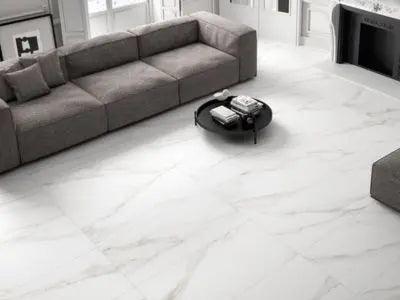The Timeless Craft of Porcelain Carving
by Shivam Tayal 18 Feb 2025 0 Comments
Porcelain carving is a specialized craft that merges centuries-old artistry with modern innovation. Often hailed as “white gold,” porcelain has its origins in ancient China, prized for its refined texture and luminous quality. Its exceptional strength and smooth finish make it a perfect canvas for intricate etchings, enabling both traditional and contemporary designs that captivate the eye. Through advanced techniques such as CNC cutting and hand-etching, artisans can realize complex patterns ranging from nature-inspired motifs to minimalist, modern styles. Whether employed in decorative wall panels, elaborate flooring, or majestic sculptural pieces, porcelain carving offers an unparalleled marriage of beauty and durability. Non-porous and highly resistant to environmental factors, porcelain easily withstands wear, moisture, and temperature changes. As a result, it requires minimal maintenance while delivering long-lasting elegance. Porcelain carving remains a testament to human creativity, seamlessly blending timeless craftsmanship with the demands of contemporary architecture and design
Introduction to Porcelain Carving
Porcelain carving is a specialized craft where porcelain is shaped and etched into intricate designs. Renowned for its strength and smooth finish, porcelain is an ideal medium for achieving detailed and lasting carvings.
Historical Context: Porcelain, often referred to as “white gold,” originated in ancient China over a millennium ago. Initially used for fine pottery and tableware, its use expanded to decorative tiles and architectural elements, leading to the evolution of porcelain carving.
Characteristics of Porcelain
- Strength and Durability: Porcelain is fired at high temperatures, making it incredibly hard and resistant to wear.
- Non-Porous and Hygienic: Its low porosity prevents water absorption, ensuring resistance to stains, mold, and bacteria.
- Versatility in Design: From traditional to contemporary styles, porcelain accommodates a wide range of artistic expressions.
The Process of Porcelain Carving
Porcelain carving involves a mix of traditional craftsmanship and modern technology:
- Advanced Carving Techniques: Artists use methods like hand-etching and laser cutting for precision designs.
- Tools and Machinery Used: CNC (Computer Numerical Control) machines ensure uniformity, while hand tools allow for unique, artistic flourishes.
- Craftsmanship in Detail: Master artisans refine each piece, blending technology with age-old techniques to achieve intricate patterns.
Types of Porcelain Carvings
- Decorative Wall Panels: Perfect for accent walls or architectural detailing, offering depth and texture.
- Flooring and Accent Tiles: Carved porcelain tiles are ideal for creating statement floors or unique backsplash designs.
- Sculptural and Artistic Pieces: Used in both interiors and public art installations for their elegance and durability.
Benefits of Porcelain Carving
- Aesthetic Appeal: Exquisite designs bring a sense of luxury and sophistication to any space.
- Durability and Longevity: Porcelain’s resistance to scratches, chips, and extreme temperatures ensures it lasts for decades.
- Low Maintenance: Its non-porous surface makes cleaning effortless.
- Resistance to Elements: Ideal for both indoor and outdoor applications due to its resistance to weathering.
Applications of Porcelain Carving
- Interior Design: Enhance walls, floors, and ceilings with carved porcelain panels and tiles.
- Architectural Facades: Porcelain carvings are used for cladding buildings, offering both beauty and protection.
- Commercial and Public Spaces: Found in offices, malls, and hotels for a touch of elegance.
Popular Design Styles
- Traditional and Classical Motifs: Intricate floral and geometric patterns inspired by ancient art.
- Modern and Minimalist Patterns: Sleek, contemporary designs with clean lines and abstract forms.
- Nature-Inspired Themes: Patterns resembling leaves, waves, or tree bark are popular for their organic feel
Porcelain Carving in Architecture
- Residential Applications: Porcelain carving is used in living rooms, kitchens, and bathrooms to elevate interior aesthetics.
- Commercial and Industrial Settings: Office spaces and public buildings benefit from its durability and refined appeal.
- Religious and Cultural Spaces: Carved porcelain is often used in temples, mosques, and churches for decorative and symbolic purposes.
Customization Possibilities
Porcelain carving offers a wide array of customization options:
- Personalized designs for specific themes or spaces.
- Integration of functional elements like lighting with carved panels.
- Collaborative projects with architects and interior designers for bespoke solutions.
Maintenance and Care
- Cleaning Techniques: Use a soft cloth and mild detergent to maintain shine and detail. Avoid abrasive cleaners.
- Preventing Damage: Protect against heavy impacts and excessive weight.
- Ensuring Long-Term Durability: Periodic inspection and cleaning ensure lasting beauty
Frequently Asked Questions
Q1. What makes porcelain suitable for carving?
Its strength, fine texture, and durability make porcelain ideal for intricate carvings.
Q2. Can carved porcelain be used outdoors?
Yes, porcelain carvings are highly resistant to weather, making them perfect for outdoor use.
Q3. Are carved porcelain tiles expensive?
While costlier than standard tiles, their durability and unique designs offer excellent value.
Q4. How are porcelain carvings cleaned?
Regular cleaning with mild detergent and a soft cloth keeps them looking pristine.
Q5. What are common uses for carved porcelain?
They are popular in wall panels, flooring, decorative art, and architectural facades.
Q6. Can porcelain carvings be customized?
Yes, bespoke designs can be tailored to fit specific themes, patterns, or architectural requirements.




